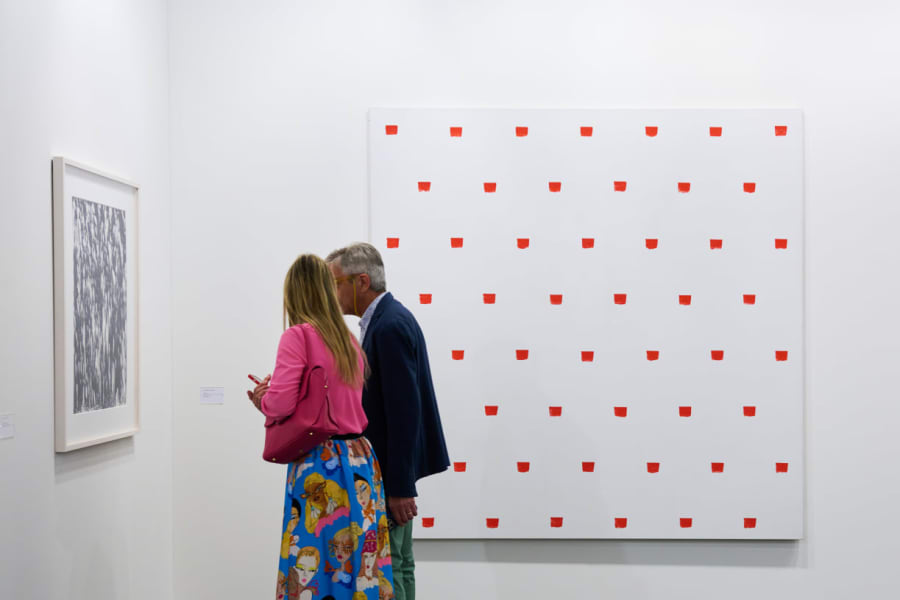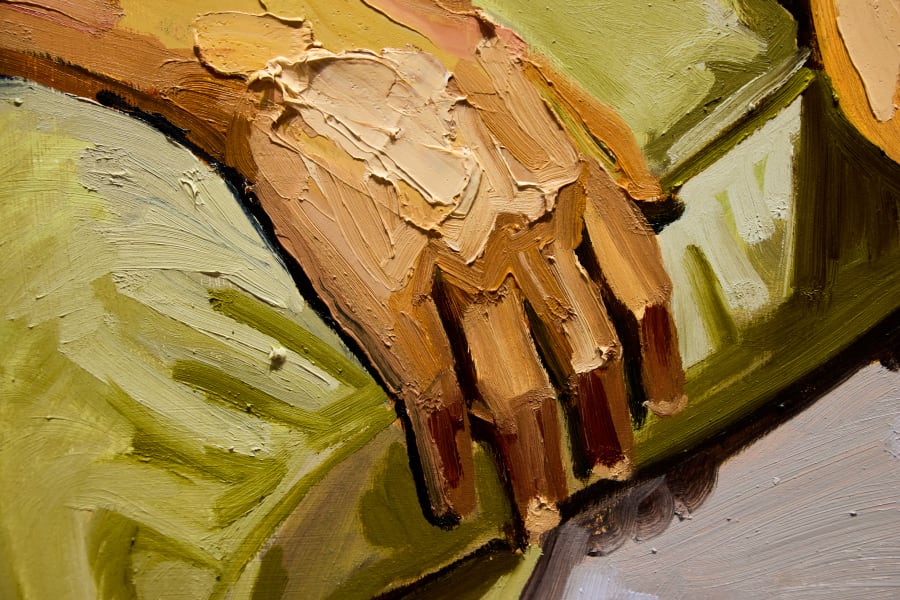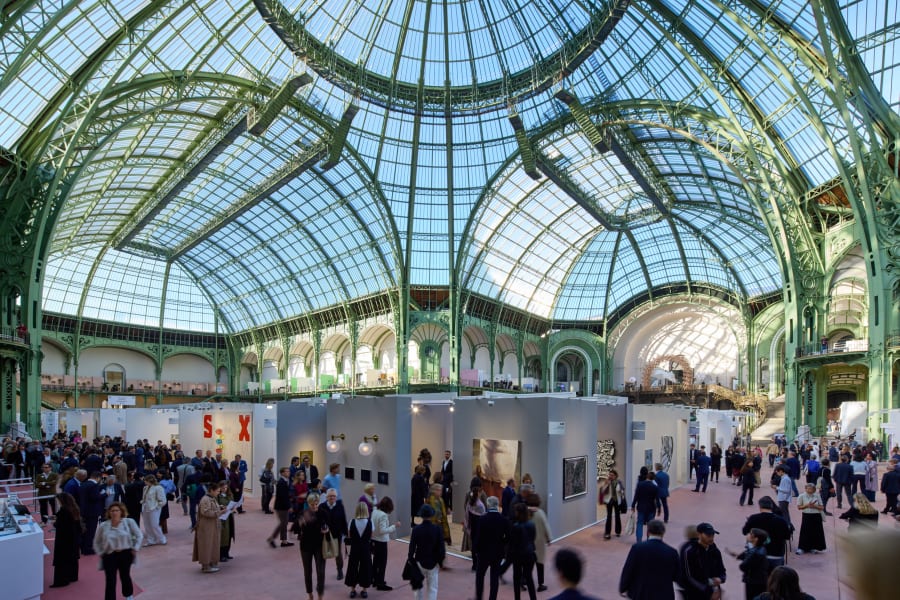The anticipated Great Wealth Transfer is looking to be one of the most significant economic shifts in decades, with the recent UBS Global Wealth Report 2024 estimating that USD 84 trillion will pass from one generation to the next over the next 20 to 25 years, a substantial proportion of which is held in high-value assets, including art collections.
In recent years, art market observers have speculated about how this generational shift might reshape tastes, priorities, and behaviors, as baby boomers make way for Gen X (born approximately between 1965 and 1980), millennials (1981 and 1996), and Gen Z (1997 and 2012). According to the Art Basel and UBS Survey of Global Collecting 2024, Gen X collectors had the highest average spend in 2023, at about USD 578,000 – and their lead continued in 2024, at ‘over a third higher than millennials and double that of boomers and Gen Z.’
But as the market gears up for New York’s marquee evening sales in postwar and contemporary art in late November, it is not clear how far along the market is in this transfer and to what extent we are able to reliably predict what it means for the trade going forward.
‘In reality there are many phases of wealth transfer and, while sales of inherited works are certainly opening up opportunities for collectors, we know that others are holding works because of sentimental reasons, tax liabilities, or simply because there are strict frameworks around the trusts or structures that they sit in,’ says the New York-based adviser, Wendy Cromwell.
The Art Basel and UBS Survey of Global Collecting shows that 72% of high-net-worth individuals (HNWIs) who inherited art have kept at least some of the pieces in their collections, regardless of how well these works align with their personal tastes. Among millennials and Gen Z collectors, less than a third cited a poor fit with their existing collections as a reason for selling or donating inherited works.
The generational wealth transfer is also not just a vertical handoff from parents to children. The UBS Global Wealth Report notes that a ‘horizontal wealth transfer’ within couples could also be playing a significant role. Of the projected USD 84 trillion set to be transferred, USD 9 trillion will be exchanged between spouses, predominantly in the Americas. More than 10% of this wealth is likely to be held temporarily by surviving spouses, often women (who outlive men by around 4 years, on average), before passing down to children or other beneficiaries. This intermediate transfer stage could again have implications for market stability, as inheriting spouses may choose to retain collections temporarily before making decisions about selling or passing them on.
Perhaps less clear than the fact that wealth is moving (albeit at an unclear pace) is the degree to which younger collectors will continue to pursue the same artists and styles which have long dominated the market. The London-based art adviser Tanya Baxter observes some shifts among Gen Z collectors. ‘We have expanded our own emerging artist list and exhibition calendar and are aware of Gen Z’s spending and choices, particularly in our growing our presence in the US,’ she says. ‘There’s a move towards artists who have organically grown from social media, as well as fashion and luxury brand collaborations—and these artists often have an audience that is uniquely online.’
Prime examples by the 20th-century masters, beloved by boomers, seemingly continue to perform solidly at public auction, if at a smaller scale than pre-pandemic levels and with lower price points. UBS report’s findings, that younger artists such as Banksy and KAWS are finding a strengthening position while major works by Surrealists also appear to be holding their appeal in markets increasingly made up of younger interest, is consistently being played out in salesrooms, including London’s Frieze week sales in October.
‘Our last Sotheby’s Insight Report found that the fastest growing category of art in the USD 1 million-plus price bracket was work by younger contemporary artists [those born 1977 or later], with a new generation exploring the art of their times, just as their parents, and even grandparents, did. But we are also seeing this new generation exploring all corners of the art and luxury market, and all price points,’ notes Lisa Dennison, Sotheby’s chairman in the Americas.
Where supply has long been a concern for the very top end of the market, there is now a question as to a potential overabundance of single-sale collections in the future. Such headline collections have proven a lifeline to the major auction houses in recent years, notably the record-breaking USD 1.7 billion sale of Microsoft cofounder Paul Allen’s collection of works in 2022; so it is no surprise nerves are rattled. Among the highlights in New York this month is the Sotheby’s sale of the collection of beauty mogul Sydell Miller, estimated to be worth USD 200 million. The top lot is a water lily painting by Claude Monet, valued at around USD 60 million alone.
‘There is some anxiety over this new generation because there is fundamentally a huge question mark around shifting tastes. But it is also an excellent time for collectors who are fearless and confident in works that transcend time,’ Cromwell says.
Where wealth is being shifted, buying behaviors are assumed to be as prone to change as taste is. ‘New collectors are certainly using online platforms more frequently. Digital access to certain works of art levels the playing field and collectors can find works at a diverse range of price points, though the highest-end and most sought-after are still being offered very privately and with discretion to targeted collectors,’ says the New York-based adviser Megan Fox Kelly, who adds that there remains an exclusive segment of the market that is ‘very discreet’ A predisposition towards buying online, and a consideration of new ways of ownership, including fractionalization and securitization, look likely, while a heightened focus on the social and ethical content of art is also evident.
Others are recognizing consistency over change: ‘Despite the changes the wealth transfer may bring, key collector behaviors remain consistent,’ says Paul Donovan, the chief economist of UBS Global Wealth Management.
He adds: ‘The HNWIs surveyed in the Art Basel and UBS Survey of Global Collecting demonstrated a strong willingness to buy from new galleries in 2023 and 2024, with 88% of those purchasing from dealers buying from at least one new gallery. Respondents allocated 52% of their expenditure to works by new and emerging artists, with 21% on works by mid-career and 26% by established artists.’
Generational trends are only one piece of a complex puzzle shaped by broader social and economic factors, distinct developments across different geographies, and the fact that the art market itself is multifaceted. But while it may feel as if no one knows exactly what change is going to look like, everyone at least appears poised for its arrival.
Download the Art Basel and UBS Survey of Global Collecting 2024 here.
Riah Pryor is an investigative journalist and author specialising in the relationship between the art market and law, supported by her experience working at New Scotland Yard’s Art and Antiques Unit.
Caption for full-bleed images, frop top to bottom: 1. Detail of an artwork by Mickalene Thomas presented by Galerie Nathalie Obadia at Art Basel Paris 2024. 2. Detail of an artwork by Asuka Anastacia Ogawa presented by Blum at Art Basel Paris 2024. 3. Detail of an artwork presented by Galerie Buchholz at Art Basel Paris 2024.
Published on November 13, 2024.


